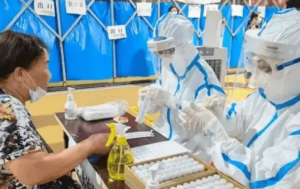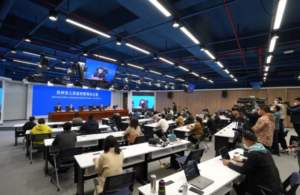
Heilongjiang Province latest outbreak notification
On November 6, 0-24 hours, 9 new local confirmed cases were reported in Heilongjiang Province, including 7 cases in Harbin City (4 cases in Daoli District, 2 cases in Nangang District, 1 case in Wuchang City, of which 5 cases were found in centralized isolation, 1 case in closed-loop management key population screening, and 1 case in non-closed-loop management key population screening), and 2 cases in Suihua City (both in Beilin District, both asymptomatic infected persons to confirmed cases).
There were 281 new cases of indigenous asymptomatic infections, including 271 cases in Suihua (238 cases in Beilin District, 33 cases in Zhaodong City, of which 129 cases were found in centralized isolation, 37 cases were found in high-risk area screening, 52 cases were found in medium-risk area screening, 31 cases were found in closed-loop management key personnel screening, and 22 cases were found in community screening), 5 cases in Heihe City (all in Aihui District, all in centralized isolation), 3 cases in Daqing City cases (all in Jeanhulu District, of which 1 case was found in centralized isolation, 1 case was found in closed-loop management key people screening, and 1 case was found in community screening), 1 case in Mudanjiang City (in Yangming District, found in centralized isolation), and 1 case in Jixi City (in Jidong County, found in closed-loop management key people screening).
Three local confirmed cases were cured and discharged on the same day (two cases in Suihua City and one case in Harbin City), and 100 cases of local asymptomatic infected persons were released from medical observation (96 cases in Suihua City and four cases in Heihe City). One case of asymptomatic infection imported from abroad was released from medical observation on the same day.
As of 24:00 on November 6, the province has 78 cases of local confirmed cases and 1,973 cases of local asymptomatic infections; the province has 1 case of overseas imported confirmed cases and 15 cases of overseas imported asymptomatic infections.
At present, the domestic and provincial epidemic prevention and control situation is still serious and complex, and the risk of importation of epidemic continues to increase, in order to fully implement the general strategy of “external prevention of importation and internal prevention of rebound” and the general policy of “dynamic zero”, the general public is invited to deeply understand the complexity, enormity and complexity of epidemic prevention and control. The general public is invited to understand the complexity, difficulty and repetitiveness of epidemic prevention and control, and to firmly establish the concept that “everyone is the first person responsible for his or her own health”. Insist on keeping a safe social distance, do not pile up, do not gather, wash hands regularly, ventilate often, have fewer gatherings, share meals, use public spoons and chopsticks, use tissues or elbow sleeves to cover coughs and sneezes, and actively cooperate with temperature measurement and health code (trip code) checks when entering and leaving public places. Pay close attention to the dynamics of the epidemic. If you intersect with the activity trajectory of positive infected persons or have a history of travel to domestic medium- to high-risk areas or epidemic-related areas within 7 days, immediately take the initiative to report to your community (village or town) or work unit and cooperate with the implementation of preventive and control measures. If symptoms such as fever, dry cough, weakness, sore throat, loss of smell (taste), diarrhea, etc. occur, do not take medication on your own, wear a mask and go to the nearest medical institution as soon as possible for fever screening and consultation, avoid taking public transportation during the consultation process, and take the initiative to inform the history of residence and contact history.
The epidemic prevention and control command in each city should check the recent arrival (return) of people with a history of residence in the province, strengthen “big data + grid”, accurately grasp and control the relevant risk personnel, and implement classification and control measures such as code assignment, nucleic acid testing, isolation management and health monitoring in the first instance after the risk personnel are assessed to be at risk of infection. The first thing to do is to implement categorized control measures such as code assignment, nucleic acid testing, isolation management and health monitoring.


Average Rating